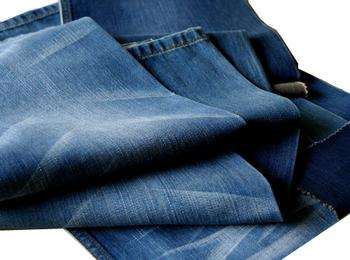Denim mill: the cause and measurement method of denim bias
In the processing and production of denim, skewed stitches and different length of trouser legs occur from time to time. The garment industry commonly refers to this phenomenon of distortion at the trouser legs after washing as "bone twisting". The resulting problems such as clothing price reduction sales or customer claims often cause manufacturers to suffer large losses. In order to avoid or reduce the phenomenon of "bone twisting", from traditional denim to modern diversified denim, there is an important process in the future finishing - the weft finishing (skewing) process. The technological level of this process directly affects the beauty and service performance of the clothes after washing. This paper introduces the measures adopted to control the size of the cowboy brawl and prevent "bone twisting".
1. Reasons for warping
Twill fabrics have potential weft deflection stress in the fabric due to yarn twist, tension and fabric structure. Denim is mostly made of coarse count yarn, whose yarn count is generally 36~97tex (16~6s) or even thicker. The internal stress changes greatly due to the effect of yarn twist; Other denim generally adopts twill arrangement, and potential weft skew force occurs in the opposite direction of the force on both ends of the warp and weft yarn in one arrangement cycle; Generally, denim is made of pure cotton fabric, and its shortening changes greatly, which will promote the echo of weft deflection stress. After the tailor has been processed by stone grinding and water washing, the internal stress is particularly large, and the fabric weft is offset, which also has a special physical index of denim - weft deflection. If the fabric is made into clothing without finishing the weft, it will inevitably be deformed and out of shape. Therefore, it is necessary to stretch the fabric in advance to eliminate the internal stress in the weft direction, so that the fabric can obtain a stable weft skew before making clothing, so as to ensure the beauty and wearing function of the clothing.

2. Determination method of weft slope and weft deflection
Before weft adjustment (skewing) of each product, it is necessary to roughly understand the weft slope and weft skew value of the product through test. The following methods are often used for testing:
Take a piece of 0.5 m long denim grey cloth, face up, spread it flat on the table, use a T-square to draw a line that is straight with the cloth edge to the other side of the cloth edge, check the inclination angle formed by a representative weft on the cloth edge reference point and the straight line, which is the weft inclination of the grey cloth, and extend the weft to the intersection point of the other side, The straight distance from the intersection of the straight reference line on the other side is the weft skew value. Then the sample is soaped and dried according to the regular and standard method, and then spread on the table again. The weft inclination and weft deflection are measured by the same method above. The difference between the two is the potential slope of the denim. According to the final weft inclination or weft skew value (different fabric widths, the same inclination and different skew values), the weft can be adjusted (pulled) to obtain a stable and non-deformable product.
The difference rate of weft skew after washing of denim is the difference value between the original weft skew and the weft skew after washing.
The article originates from denim mill:http://mkiller.cn/
-
10-15
Knitted denim factory: weaving process of knitted denim
Weaving technology of knitted jeansThe application of knitted jeans in life can be said to be many, and the advantages of knitted jeans are also many, so it has been widely used in the clothing indust
-
07-08
The knitting denim factory introduces the washing methods and types
1. General washing means general washing. It's just to change the washing we know about everyday to mechanization. The water temperature is about 60 ° - 90 ° C, and a certain amount of detergent
-
04-08
Characteristics of coated denim
Coated denim refers to a kind of post-processing product of denim, which is evenly coated with macromolecular compounds that can form a film on the surface of denim to change the appearance, style or
-
03-04
The reason why elastic jeans have elasticity
Now we all love beauty and attach importance to the maintenance of body shape. Many people will choose some elastic clothes to highlight the curve when they have attractive body shape. Elastic jeans h
